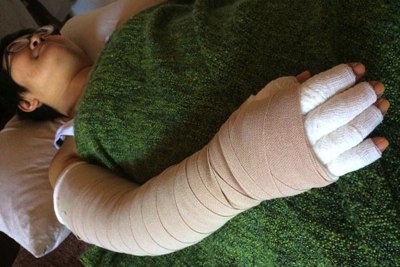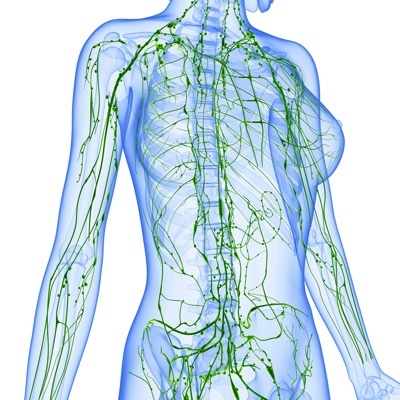 What is the Lymphatic System?
What is the Lymphatic System?
The Lymphatic System is like a “vacuuming” system within the body. The Lymph vessels run closely to the blood vessels both superficially and deeply everywhere in the body. They correct all the unwanted substances, remove excessive fluid and circulate the immune cells. The lymphatic fluid in the lymphatic vessels goes through the lymph nodes to be filtrated and concentrated before it goes back to the blood stream at the vain at the neck. Consequently, the lymphatic system has very important roles for healthy immunity.
What is Lymphoedema?
Lymphoedema refers to an increase of protein-rich fluid caused by a functional and/or mechanical disorder of the Lymphatic vessels of Lymph nodes.
In Australia, roughly 30,000 people are affected by Lymphoedema. Approximately one-third of all Lymphoedemas are primary in origin, the other two-thirds are secondary.
 Primary Lymphoedema is caused by a congenital malformation of lymphatic vessels/nodes.
Primary Lymphoedema is caused by a congenital malformation of lymphatic vessels/nodes.
- It most commonly occurs in women
- It usually occurs in the second to third decade of life
- The sewlling mostly occurs in the legs unilaterally
- Factors likely to trigger include sunburn, trivial injury, stress and pregnancy
Secondary Lymphoedema is caused by damage to lymphatic pathways and/or nodes
- Lymphatic damage can be caused by cancer treatment (surgery and/or radiation), knee replacement, stripping veins, hernia repair, multiple abdominal surgeries, breast reconstruction etc.
- Swelling may develop soon after damage has occurred or over a period of months/years
- Most common causes of secondary lymphoedema are breast or abdominal cancer
Breast Cancer
About 20% of all patients who have undergone axillary lymph node dissection will develop lymphoedema in their lifetime. Roughly 50% of these patients will develop swelling in the first post-operative year and in all other cases it will occur later.
Abdominal Cancer
Incidence of post-operative lymphoedema
- Cervical cancer 26%
- Endometrial cancer 22%
- Ovarian cancer 20%
- Vulvar cancer 50%
Early Intervention
Early intervention, prevention and reduction are very important when treating Lymphoedema. The swelling process may have already started even though there is no obvious swelling. Often there is a sensation of heaviness, tingling or a general feeling of something wrong in the limbs first. At this early stage the Lymphoedema is reversible by way of efficient treatment. However, it becomes irreversible in the advanced stage.
